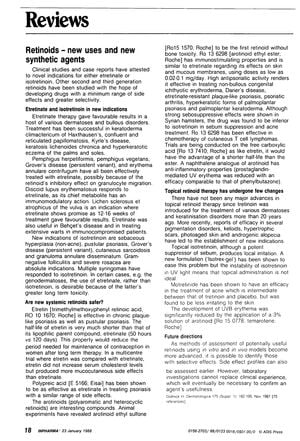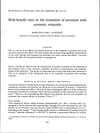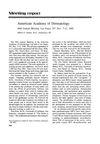Retinoids: New Uses and New Synthetic Agents
January 1988
in “
Inpharma (Balgowlah)
”

TLDR New retinoids are effective for various skin conditions and are being developed to have fewer side effects.
Clinical studies and case reports have shown that etretinate and isotretinoin are effective in treating a variety of dermatological conditions beyond their traditional uses. Etretinate has been successful in treating various dermatoses, bullous disorders, and has shown promise in treating lichen sclerosus et atrophicus of the vulva, Behçet's disease, and warts in immunocompromised patients. Isotretinoin has been effective for conditions such as sebaceous hyperplasia, pustular psoriasis, and severe rosacea, among others. Newer systemic retinoids like etretin and polypreic acid have been developed with the aim of reducing side effects and improving safety profiles. Etretin, for example, has a much shorter half-life than etretinate, which could reduce the duration of required contraception after therapy. Arotinoids, another class of retinoids, have shown promise in animal experiments, particularly with arotinoid ethyl sulfone, which does not exhibit bone toxicity. Topical retinoid therapy has not seen major advances, but new indications for existing treatments have been established, including for androgenic alopecia and photoaged skin. Future research aims to identify retinoids with selective effects and better side effect profiles, but clinical experience is ultimately necessary to confirm their usefulness.


